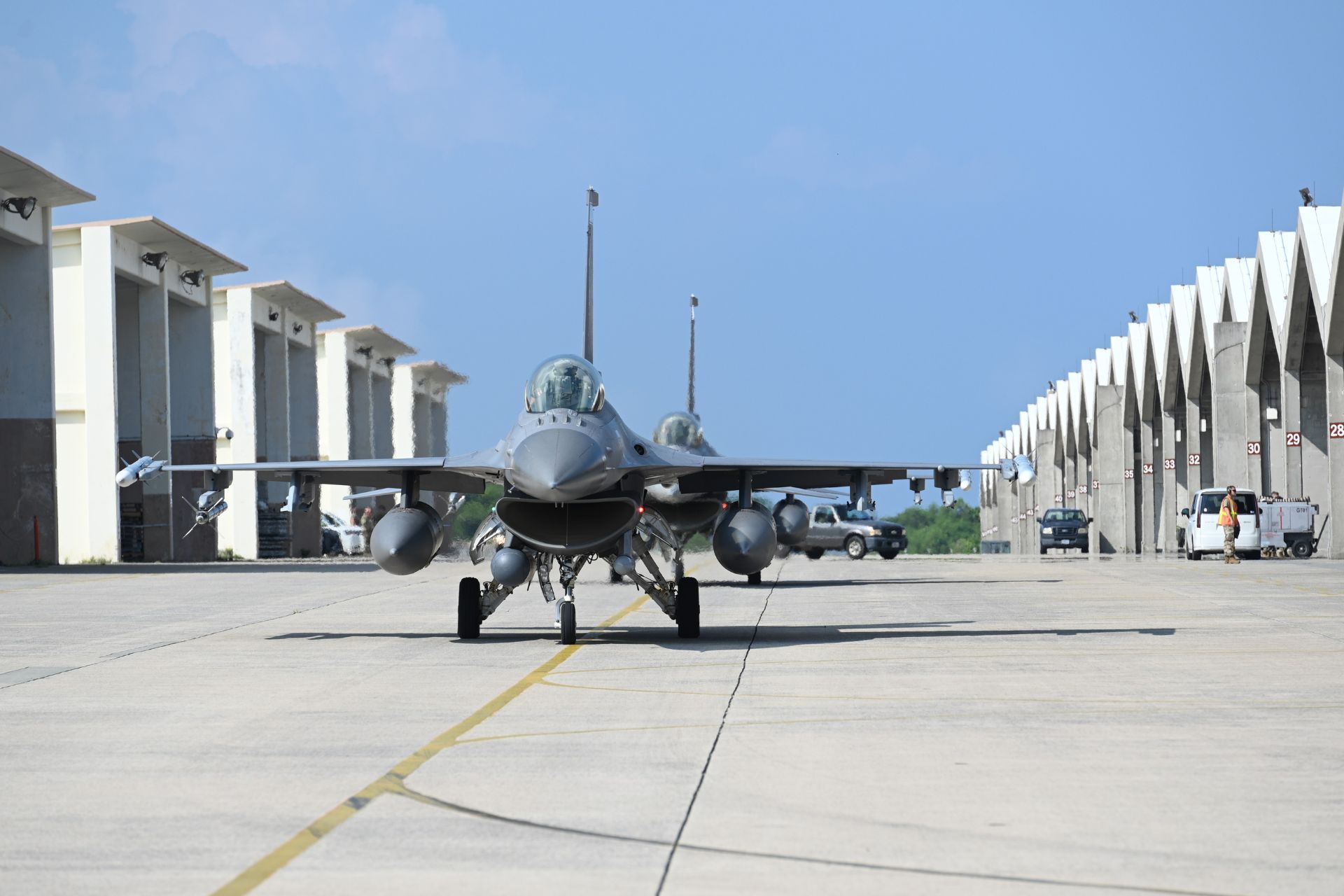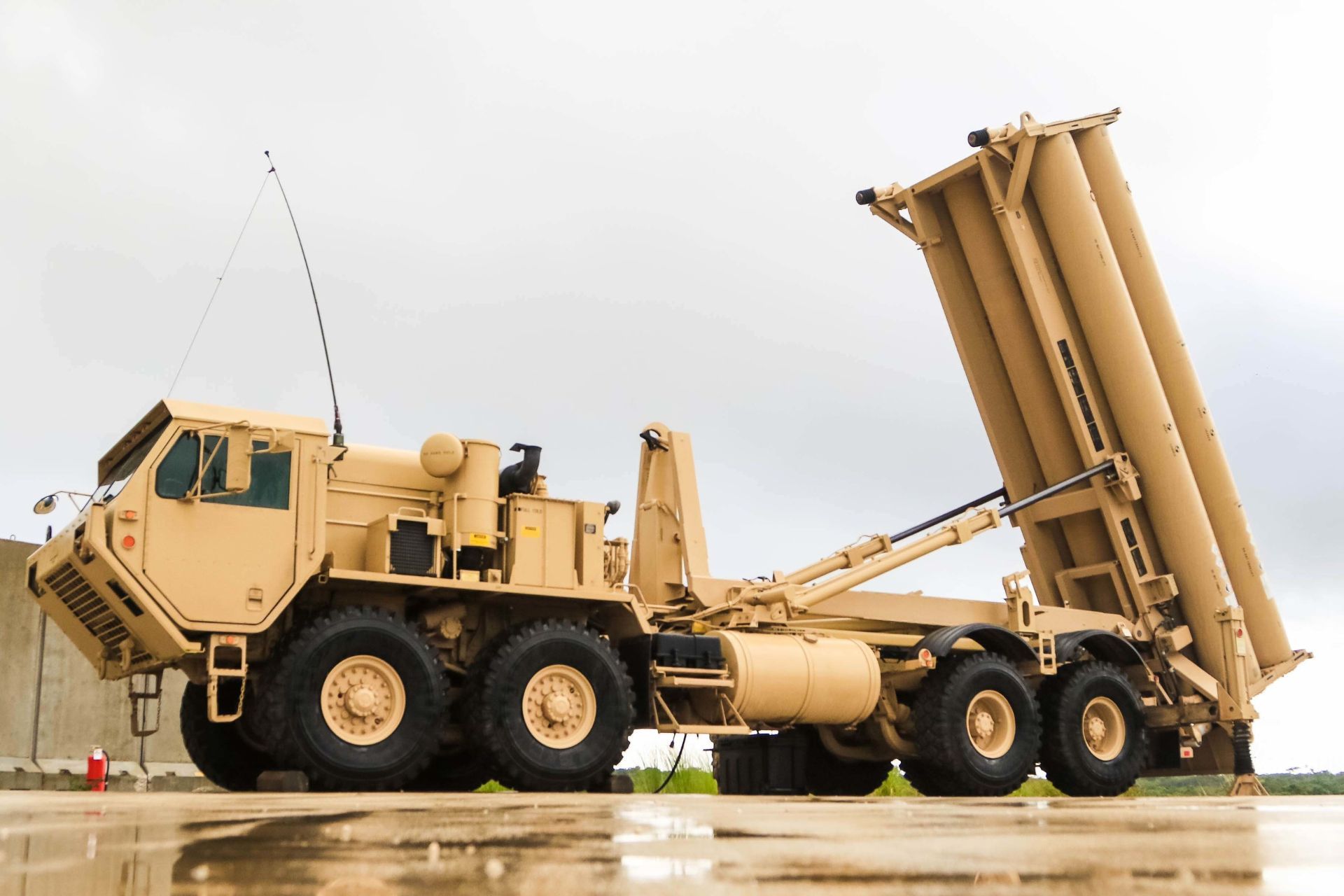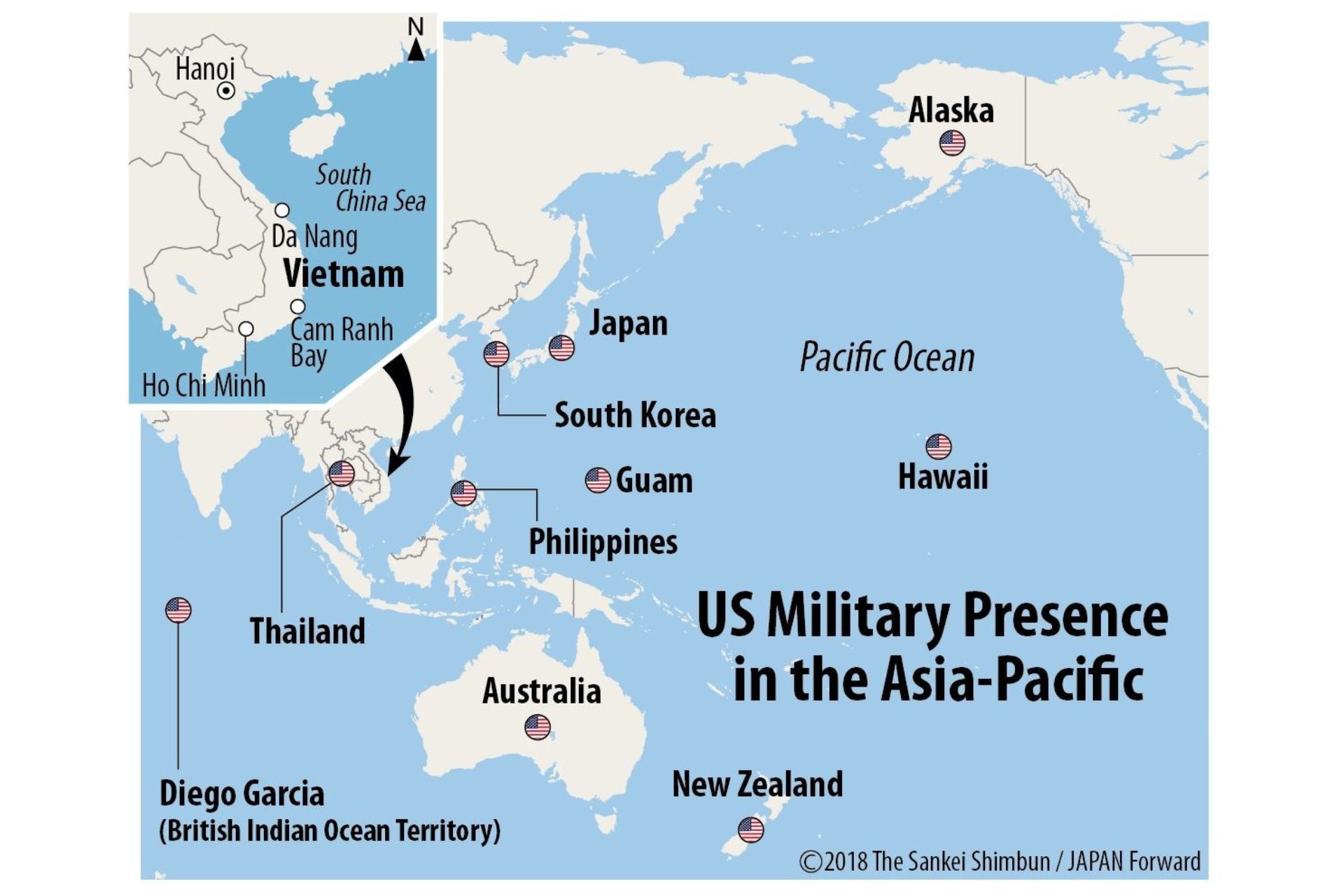Breaking News
Analysis: US Air Force Faces Challenges in Defending Its Pacific Bases Against Potential Chinese Missile Attacks.
The U.S. Air Force's strategy to disperse its aircraft across a broader network of bases throughout the Pacific, under the Agile Combat Employment (ACE) concept, faces significant challenges. This strategy, designed to complicate potential Chinese missile attacks, requires not only moving aircraft between bases but also strengthening the defenses of these installations against the growing threat of Chinese ballistic and cruise missiles.
Follow Army Recognition on Google News at this link

F-16 Fighting Falcons assigned the 148th Fighter Wing, Air National Guard, taxi down the runway during a deployment to Kadena Air Base, Japan, August 12, 2024 (Picture source: US DoD)
The Agile Combat Employment (ACE) concept is a military strategy developed by the U.S. Air Force to improve the flexibility and resilience of forces in contested combat environments, especially against adversaries like China or Russia. ACE aims to disperse aircraft and forces across a larger network of bases, including austere or temporary bases, rather than concentrating them in a few large, vulnerable bases.
This dispersal complicates the enemy's ability to target U.S. forces with missile strikes, as aircraft can be moved frequently from one base to another. In addition to dispersal, ACE includes improving base defense capabilities, employing camouflage techniques, and implementing rapid runway repair systems to maintain base operability even after attacks. The overall goal is to ensure the continuity of military operations while reducing the risk of a devastating attack on a single critical installation.
Air Force Chief of Staff Gen. David W. Allvin acknowledged that while the strategy of force dispersal is crucial, it is equally important to enhance the defenses of these bases. He emphasized the need for a more robust and active defense system, noting that the Department of Defense views this as a joint requirement for both the Air Force and the Army.
Although the Army traditionally handles base defense against missile attacks, including deploying Patriot missile batteries in the Middle East, the Pacific theater presents a more complex challenge. The Army's current capabilities, including the use of directed energy systems, are still in development, and resources remain limited.
In Europe and the Middle East, similar threats from adversaries like Russia and Iran have highlighted the need to improve base defenses. The U.S. military has faced attacks from missiles, drones, and rockets, but these attacks have primarily targeted troops rather than disabling airbases. However, the threat persists, prompting U.S. forces to take precautions, such as constructing alternate command centers to ensure operational continuity.

A Terminal High Altitude Area Defense, or (THAAD) weapon system assigned to Task Force Talon, in Andersen Air Force Base, Guam, Oct. 26, 2017. (Picture source: US DoD)
In response to these challenges, the Air Force and Army are working closely together to develop solutions. Vice Chief of Staff Gen. James C. Slife and Undersecretary of the Air Force Melissa Dalton are leading coordination efforts with the Army to ensure both branches are aligned in defending airbases. This includes ensuring that missile defense systems are mobile and can be rapidly deployed to protect different sites as needed.
For several years, the United States has been bolstering its defense measures in the Asia-Pacific region in response to growing missile threats from China and North Korea. These efforts include deploying advanced missile defense systems such as the Terminal High Altitude Area Defense (THAAD) and Patriot missile batteries in strategic locations like South Korea and Guam. For example, in South Korea, a THAAD battery has been strategically positioned to counter North Korean missile threats, while multiple Patriot systems provide an additional layer of defense around key U.S. bases.
In Guam, a U.S. territory within range of both Chinese and North Korean missiles, the U.S. military has reinforced its defenses by deploying THAAD systems alongside Aegis Ballistic Missile Defense (BMD) ships. These systems form a comprehensive shield designed to intercept incoming ballistic missiles, protecting both military personnel and the local population.

US Military Presence in the Asia-Pacific (Picture source: Japan Forward)
Additionally, the United States is working on developing new facilities and backup bases, such as in Tinian in the Northern Mariana Islands, to ensure continued operations even if primary bases are successfully targeted. This strategy of asset dispersal and fortifying key locations is integral to the U.S.'s broader approach to maintaining a credible deterrent against potential adversaries in the Indo-Pacific.
These efforts highlight the complex and multi-layered nature of U.S. defense initiatives in the region, which aim to protect both military assets and regional stability in the face of increasingly sophisticated missile threats.
Gen. Allvin also emphasized the importance of integrating traditional defense tactics with modern technologies. Decoys, camouflage techniques, and rapid runway repair systems are being considered to make it more difficult for adversaries to conduct effective strikes. The overall goal is to create uncertainty for the enemy, making it harder for them to decide whether to target a base or risk wasting resources on decoys.
The complexity of defending these bases in the Pacific underscores the ongoing challenge of maintaining air superiority in a contested environment. As the United States continues to project power in the region, ensuring that bases are adequately defended will remain a crucial focus for both the Air Force and the Army.


























